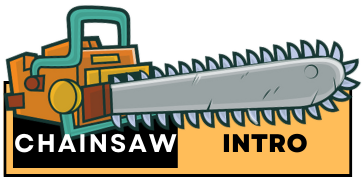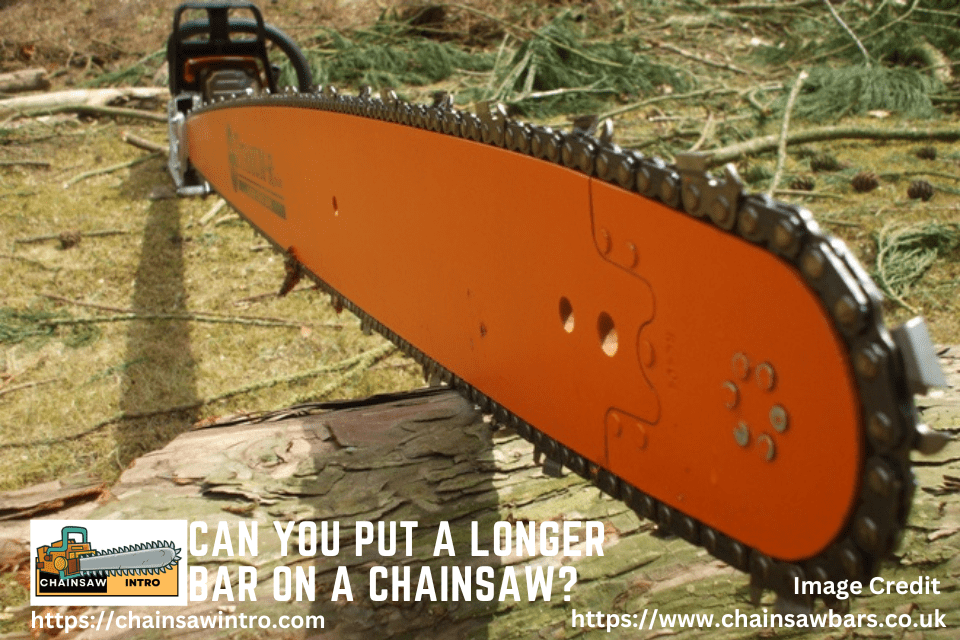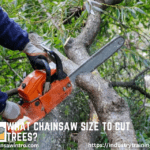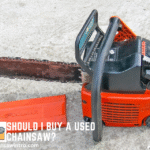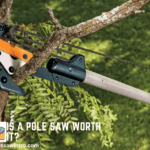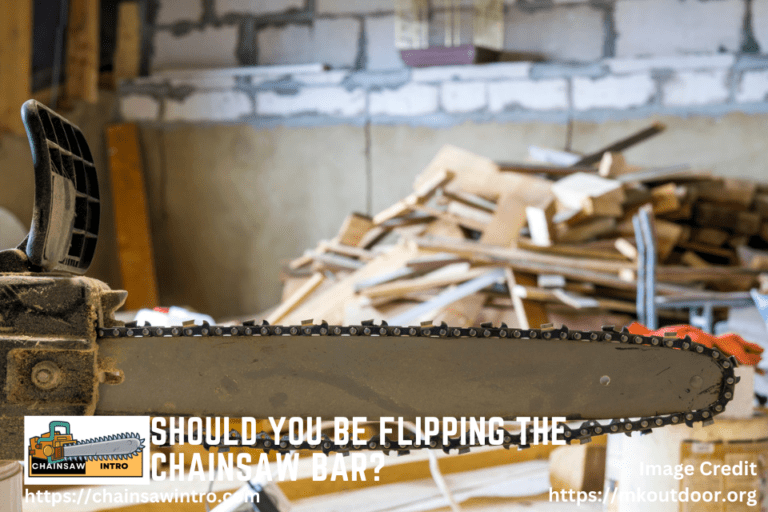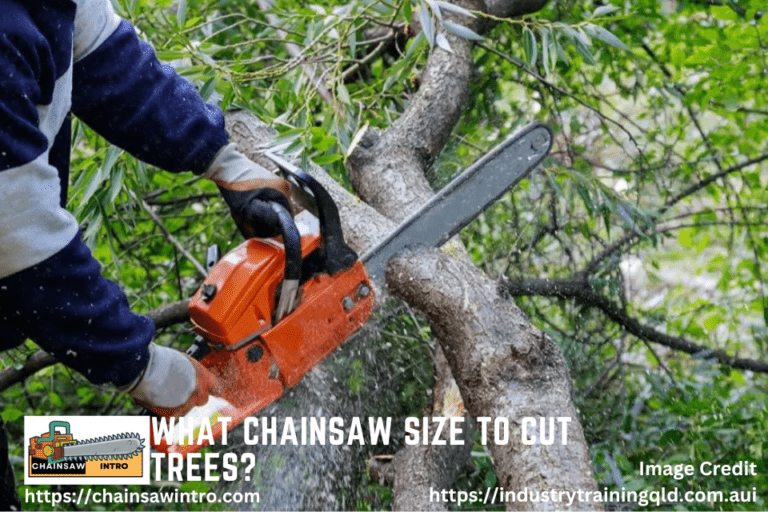Many chainsaw owners eventually ask: “Can I put a longer bar on my chainsaw?” The answer is sometimes yes—but not always. While a longer bar increases cutting capacity, it must be compatible with your chainsaw’s engine power, chain type, and manufacturer specifications. Installing a bar that’s too long can cause poor performance, safety risks, and excessive wear on your saw.
In this guide, we’ll cover when you can safely upgrade to a longer bar, the pros and cons, and how to choose the right bar length for your needs.
What Does a Chainsaw Bar Do?
The chainsaw bar is the flat metal guide that the chain runs around. It determines the maximum cutting diameter of the wood you can tackle in a single pass.
- A 16-inch bar is great for trimming, limbing, and firewood cutting.
- A 20-inch bar allows you to cut through larger trees.
- Bars 24 inches or more are typically reserved for professional loggers.
While it may seem that “bigger is better,” longer bars are not always the best choice for homeowners or casual users.
Why Use a Longer Bar on Your Chainsaw?
Switching to a longer bar offers several benefits, :
- Increased Cutting Capacity: A longer bar (e.g., 18-24 inches) can cut larger trees or logs (up to 20 inches in diameter) in a single pass, ideal for felling or bucking.
- Fewer Cuts: Larger bars reduce the need for multiple cuts, speeding up tasks like processing firewood or clearing storm debris.
- Versatility: A longer bar allows a single saw to handle a wider range of tasks, from pruning to heavy-duty logging,.
- Professional Applications: For arborists or loggers, longer bars on gas saws like the Husqvarna 455 Rancher improve efficiency for large-scale projects.
For instance, upgrading from a 16-inch to a 20-inch bar on a Stihl MS 271 can make felling medium-sized trees more efficient, per our article on electric chainsaw tree cutting.
Can You Put a Longer Bar on a Chainsaw?
Yes, you can put a longer bar on your chainsaw if the saw is designed to handle it. Every chainsaw has a recommended bar length range. For example, a mid-size chainsaw may be rated for 16–20 inches, meaning you can use any bar within that range safely.
However, if you try to exceed the manufacturer’s recommendation—for instance, putting a 24-inch bar on a saw designed for 16–20 inches—you risk:
- Reduced cutting power
- Increased wear and tear on the engine and sprocket
- Higher safety risks like kickback
- Poor fuel or battery efficiency
Compatibility Considerations for Longer Bars
Before installing a longer bar, ensure compatibility with your chainsaw:
- Chain Pitch: The spacing between chain links (e.g., 3/8”, .325”, or 1/4”) must match the bar and saw’s sprocket to ensure proper fit.
- Chain Gauge: The chain’s drive link thickness (e.g., .050”, .058”, .063”) must fit the bar’s groove, per our article on chainsaw sprockets.
- Drive Link Count: A longer bar requires a chain with more drive links (e.g., 72 links for an 18-inch bar vs. 60 for a 16-inch bar).
- Mounting Pattern: The bar’s mounting slot must align with the saw’s stud pattern (e.g., Stihl’s D025 or Oregon’s A041).
- Powerhead Capacity: The saw’s engine or motor must have sufficient power to drive the longer bar. Most saws support bars 2-4 inches longer than stock, but exceeding this can cause strain.
For example, the Greenworks 80V with an 18-inch bar may support a 20-inch bar, but going to 24 inches could overtax the motor, per manufacturer specs.
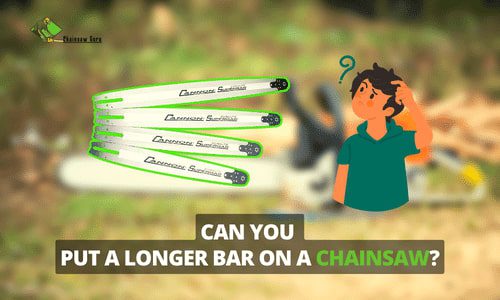
Benefits of a Longer Chainsaw Bar
1. Increased Cutting Capacity
The biggest advantage is being able to cut through larger logs or trees in one pass.
2. Less Bending and Straining
A longer bar allows you to reach farther, making it easier to cut big trunks without leaning over.
3. Versatility for Larger Projects
If you occasionally work on storm cleanup or fell bigger trees, a longer bar gives you more flexibility.
Drawbacks of a Longer Chainsaw Bar
1. Reduced Control
Longer bars make the saw heavier and harder to maneuver, especially for beginners.
2. Slower Cutting Speed
With more chain to drive, your saw may cut slower compared to a shorter bar on the same engine.
3. Higher Risk of Kickback
Longer bars increase the chance of dangerous kickback accidents, especially when cutting smaller wood.
4. More Wear on Engine and Parts
A longer bar puts extra strain on the motor, clutch, and sprocket, potentially shortening the life of your chainsaw.
How to Choose the Right Longer Bar?
To select a compatible longer bar, follow these steps, per 2025 Oregon guides:
- Check the Manual: Confirm the manufacturer’s recommended bar lengths (e.g., Stihl MS 271 supports 16-20 inches).
- Match Specifications: Ensure the bar’s pitch, gauge, and mounting pattern align with your saw and chain.
- Choose Quality Brands: Opt for bars from Oregon, Stihl, or Husqvarna ($30-$120), which last 2-5 years with proper care, per our article on chainsaw bar lifespan.
- Adjust Chain Length: Purchase a chain with the correct drive link count for the longer bar.
- Verify Power: Ensure your saw’s engine (e.g., 42cc for gas) or motor (e.g., 80V for electric) can handle the longer bar.
For instance, upgrading an Ego CS2005 (56V) from a 20-inch to a 22-inch Oregon bar requires a chain with 78 drive links (vs. 72) and matching .050” gauge and 3/8” pitch.
User Feedback and Real-World Insights
Users on Reddit’s r/Chainsaw and ArboristSite share mixed experiences with longer bars:
- Performance Gains: A 20-inch bar on a Greenworks 80V “makes quick work of larger logs,” per Reddit feedback.
- Challenges: Some report reduced battery life (10-20% less runtime) and increased fatigue with longer bars.
- Cautions: Over-sizing bars on underpowered saws (e.g., 24-inch on a 40V saw) causes stalling.
Always verify compatibility to avoid performance issues.
Safety Tips for Upgrading to a Longer Bar
- Always check your chainsaw manual for the approved bar length range.
- Upgrade the chain along with the bar to ensure proper fit.
- Use sharp chains to reduce strain on the motor.
- Wear protective gear, especially since longer bars increase kickback risk.
- Don’t exceed your saw’s power capacity, even if a larger bar fits physically.
Final Verdict: Should You Put a Longer Bar on Your Chainsaw?
Yes—you can put a longer bar on your chainsaw, but only if it’s within the manufacturer’s recommended range and your engine has enough power. A longer bar offers greater reach and cutting capacity, but it comes with trade-offs in weight, control, and safety.
For homeowners and DIY users, a mid-size bar is often more practical. If you’re tackling large trees or professional work, investing in a more powerful saw with a longer bar may be the better route.
Frequently Asked Questions
Can I put a 20-inch bar on a 16-inch chainsaw?
Not usually. If your chainsaw is only rated for 16 inches, adding a 20-inch bar will overload the engine and reduce performance. Always check the manufacturer’s recommended bar length range.
In addition, the weight of the 20 inch bar will put extra strain on the engine and chain, causing them to wear out faster. For these reasons, it is not recommended to put a 20 inch bar on a 16 inch chainsaw.
Can I Put a 20 Bar on My Stihl Chainsaw?
No, you cannot put a 20 bar on your Stihl chainsaw. The largest size bar that will fit a Stihl chainsaw is 18 inches.
How do I know what size bar my chainsaw can handle?
Your chainsaw’s user manual or product specifications will list the minimum and maximum bar lengths it supports. Staying within that range ensures safe and efficient performance.
Do I need a new chain when upgrading to a longer bar?
Yes. A longer bar requires a chain with more drive links, and it must match the bar’s pitch and gauge as well as the saw’s sprocket.
Is a longer bar better for cutting firewood?
Not always. While longer bars handle large logs in one pass, shorter bars are usually lighter, faster, and easier to control for standard firewood cutting.
What happens if I use too long of a bar?
Using a bar beyond your chainsaw’s capacity can cause slower cutting, overheating, excessive wear, and dangerous kickback risks.
Should beginners use a longer chainsaw bar?
No. Longer bars are heavier and harder to control, making them less safe for new users. Beginners are better off with a shorter bar in the 14–16 inch range.
I’m a chainsaw expert with over 8 years of hands-on experience in forestry, landscaping, and property maintenance. Over the years, I’ve worked with top brands like Stihl, Husqvarna, and Oregon, and I’m certified in chainsaw safety and maintenance practices. My goal is to share practical guides, honest reviews, and proven safety tips to help homeowners, DIYers, and professionals use chainsaws more effectively and confidently.
